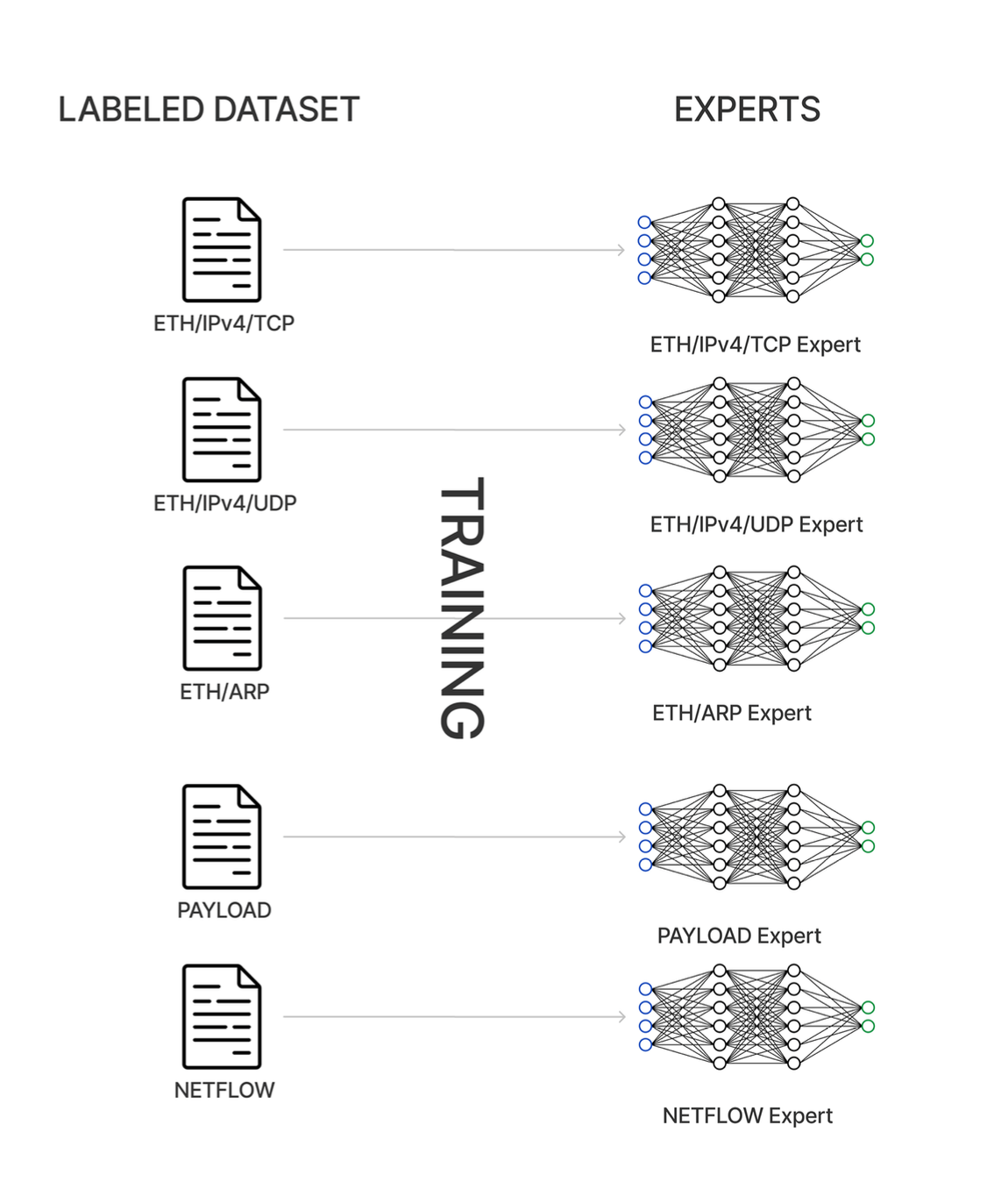Al Pastor: NIDS Dataset Generator
Introduction
Intrusion detection systems utilize two ways to identify intrusions: misuse detection and anomaly detection. Misuse detection identifies anomalous states (for example, malicious packets) and attempts to locate them within the data set. Traditional Intrusion Detection Systems do this by examining the database of prior attacks and comparing them to the packets coming on the network (i.e., the headers and contents of packets on the network).
Detecting network abnormalities is a different story. In this case, the system must recog- nize the pattern in the data, classify a condition as ’normal,’ and then treat any deviation from that definition as a possible threat. This cannot be accomplished using conventional Intrusion Detection Systems, as previously stated, their skill is matched by their programmer’s.
A threat is unpredictable by definition, which is what makes it a threat in the first place. Machine learning techniques can control and identify behavioral problems, which is why there is a growing trend of employing Artificial Intelligence (AI) software in conjunction with IDS.
The most frequently encountered issue in machine learning research is the collection and structuring of data. As machine learning-based intrusion detection systems are a relatively new technology, it’s logical that not as much work has been done on developing datasets to “train” our algorithms. The majority of dataset generating implementations employ Packet Flow data (comparable to Cisco’s NetFlow data) and utilize metrics such as packet delivery rate, connection counts, and so on to identify network hazards. While this is an effective method for detecting the most damaging sorts of threats (e.g., brute force assaults), it is ineffective at detecting more complicated threats in which just a few fields of packets are modified to carry out the attack (for example the Ping of Death attack). Certain implementations augment their data with protocol header fields such as the TCP FLAG. However, the header fields included in those solutions were inserted because of previous knowledge indicating that an attacker may utilize this flag to launch an assault (e.g. SYN Flood). As a result, if a new zero-day assault exploits a vulnerability in another field (for example, TCP Options), the Intrusion Detection System will be unable to detect it.
The Al Pastor project’s goal is to create datasets from local networks, analyze network traffic, and detect risks using Neural Networks. The system generates two kinds of datasets: traditional Netflow data and protocol-specific data. We employ a rule-based intrusion detection system to assign a value (1-4) to suspicious packets depending on their riskiness. We next train various Neural Network models, that we refer to as Experts, to classify incoming packets (and packet flows) based on Snorts’ classification.
Introducting Al Pastor
As it was previously mentioned, existing datasets contain very little protocol-specific information, and the information included is restricted to protocol headers known to be the source of prior attacks (for example TCP, ICMP flags, number of SYN Packets, etc). On the other hand, while Packet Flow data is particularly effective in tracing a wide variety of attacks, it will have difficulties with attack vectors that do not modify the pace at which data is transmitted but instead rely on changes to the packet headers (for example FREAK, Heartbleed, Downgrade attacks). Such zero-day attacks will be extremely difficult to detect if their fundamental causes are not being monitored in the dataset (for example, a change in a TLS Record or an incorrect bit on the DNS query Type).
This is how Al Pastor came to be. By using packet header data, our first goal was to construct machine learning models capable of detecting attacks in protocols other like TCP, UDP and IP. Our experts were developed using Neural Network approaches. However, when developing Al Pastor, it became clear how time-consuming locating the appropriate dataset and testing unique examples may be. Additionally, by observing how several datasets supplied distinct properties, we determined that some form of dataset adaptor would be really beneficial. Given that the majority of publicly accessible datasets contain their original capture files (pcap), we had the following thought: What if we could construct our own datasets by parsing pcap files? In this manner, we may generate datasets by capturing packets in our local network traffic and also by converting different public datasets into a single format, allowing us to exploit their collective expertise without the need to change our expert models.
Architecture
Consequently, we built a software for producing NIDS datasets from pcap files. Al Pastor supports the creation of two types of datasets:
- Protocol Header Datasets: Those dataset contain packet protocol specific information a nd they differ per protocol stack (for example ETH/IPv4/TCP Dataset, ETH/IPv4/UDP Dataset, ETH/IPv4/QUICC, etc.)
- Packet-Flow Data: Netflow-like data.
A label is then assigned to each entry in the dataset based on whether the respective packets contained threats or raised an Alert. In order to diagnose threats we are using a Signature/Rule-based IDS called Snort. The overall Dataset Creation Process is displayed bellow: a pcap file which contains TCP, UDP and ARP packets is parsed and multiple datasets are created from it. Afterwards Snort assigns a label to each entry of every dataset.

The datasets are then utilized to train the NN Experts. Each form of NN Expert enables us to investigate various types of threats:
- Protocol Header Experts: These specialists are capable of tracing the same threats that the signature-based IDS can, as well as their variations. Additionally, this IDS functions as an Anomaly-based IDS, defining a typical packet header state and raising warnings when strange packets are identified.
- Packet-Flow Expert: Is able to locate weird patterns in rate of data transmissions. Therefore it is mostly able to distinguish Interruption attacks, similarly to IDSs trained with the KDD and the NSL-KDD Datasets

You may download the thesis paper (that is supplied here) for a more in-depth look at the project, its design, and its findings.